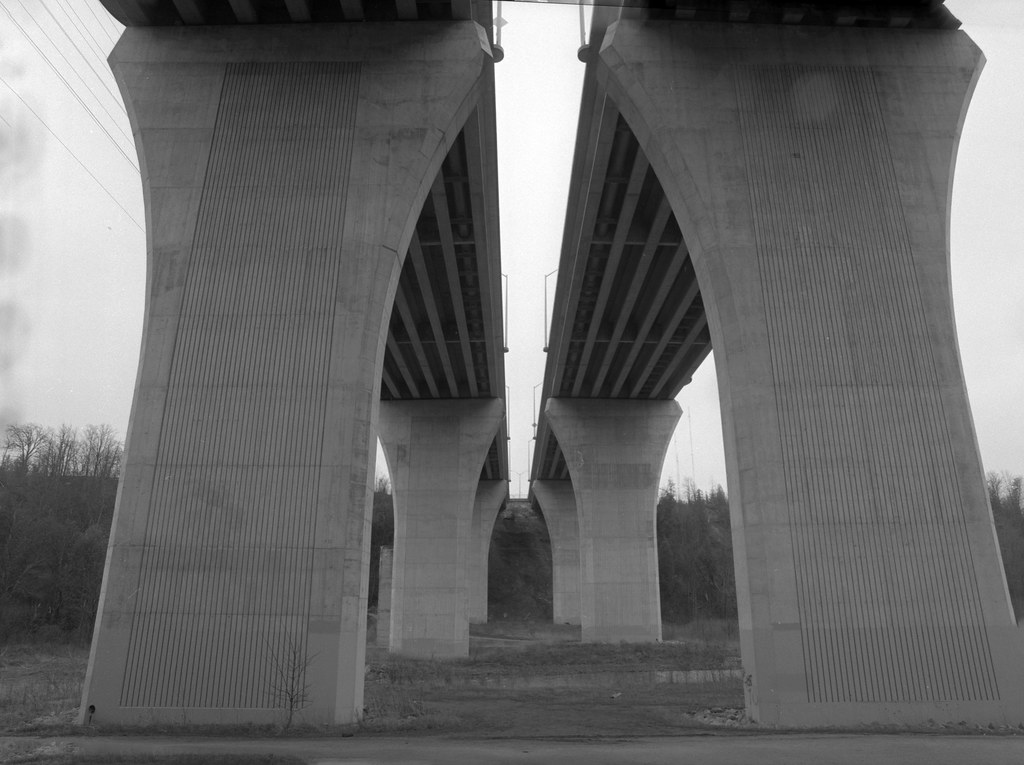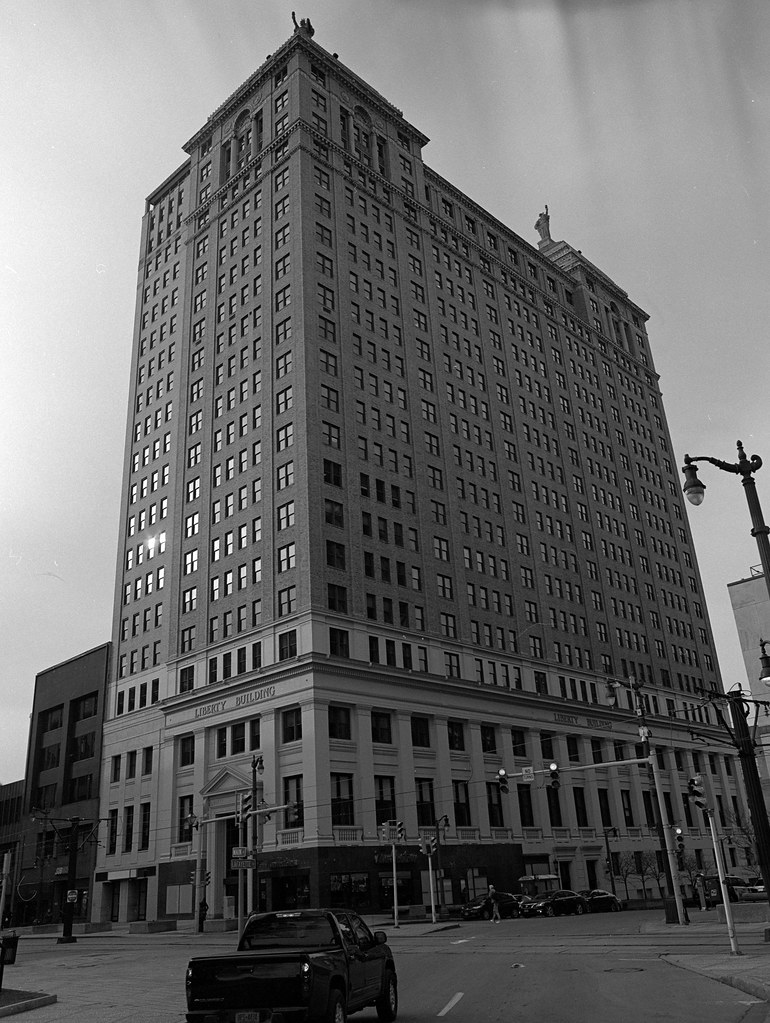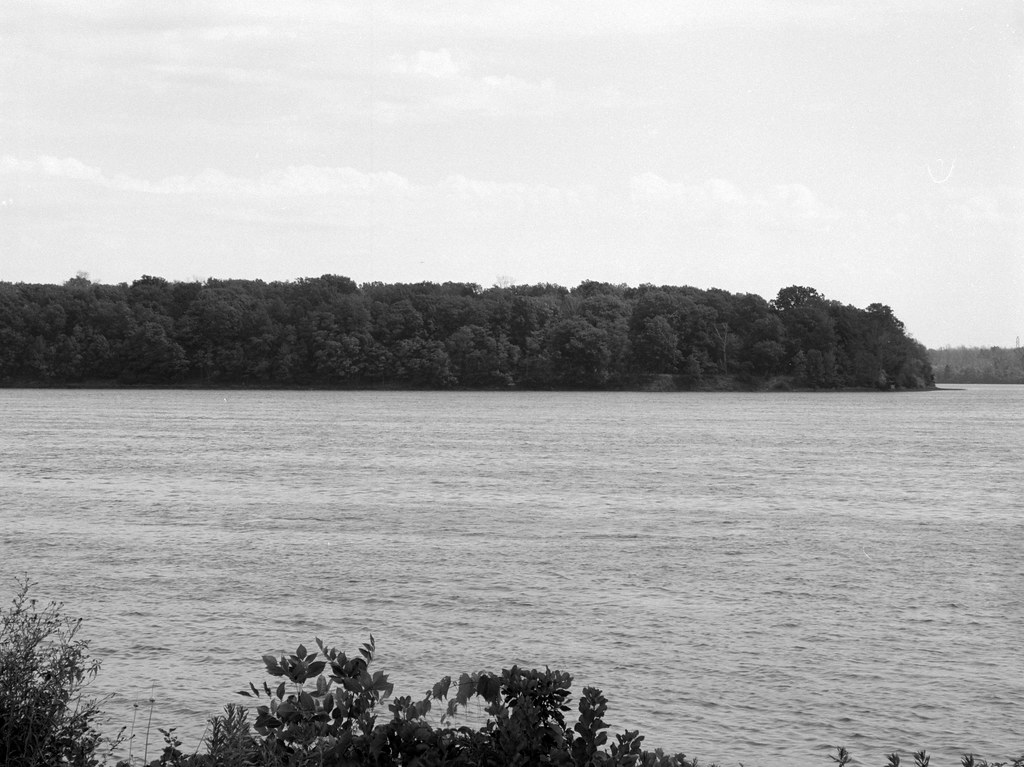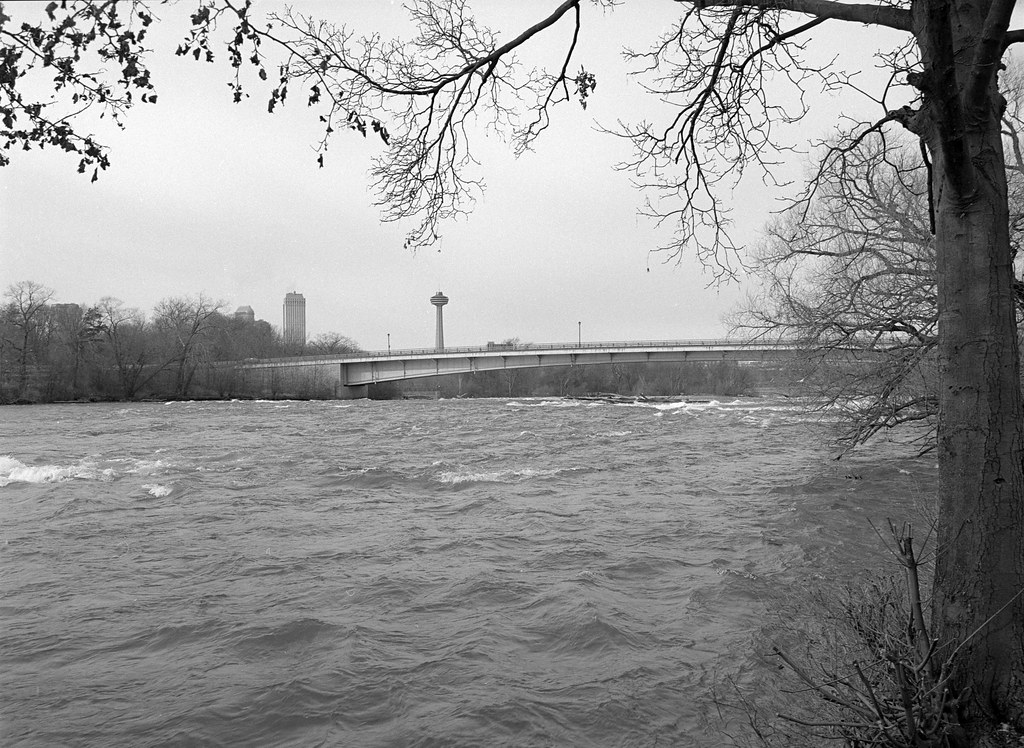If you’re confused at the title, don’t worry, there never was the Republic of Canada, well not in any formally recognised manner. I happened across this strange pseudo-nation while doing the initial planning stages of this project. The grand republic is the brainchild of William Lyon MacKenzie and Charles Duncombe; they desired to reshape both Upper and Lower Canada into a single country with a Constitution and Government structure similar to that in the United States of America. And while he aimed to establish his new republic through force of arms, his failure at Toronto and Duncombe’s failure in the west did little to dampen their spirits and plans. They still desired to change how Canada would be governed radically; they just needed more time and a small island on the Niagara River. But first both men needed to get out of Upper Canada, and the tails of their escape are the stuff of Hollywood Scripts, which means they are equal parts reality mixed with fiction.

Graflex Pacemaker Crown Graphic – Schneider-Kreuznach Symmar-S 1:5.6/210 – Kodak Tri-X 320 @ ASA-320 – Kodak D-76 (Stock) 5:30 @ 20C
By the 7th of December William Lyon MacKenzie finally came to his senses, he knew that he could not hold at Montgomery’s Tavern and with the Government militia marching north on Yonge Street and a ₤1,000 (₤109,980 today or 192,123$ CAD) bounty on his head. Taking only his coat, he headed north into the rural areas where his support remained strong. Several other rebels managed to evade escape from the militia forces including Anthony Van Egmond and Samuel Lount who joined MacKenzie as they headed into the Toronto Township. MacKenzie enjoyed a great deal of support in the area as he once represented them in the Legislative Assembly. Using the Dundas Road by the end of the 7th the small band of Rebels took shelter at the Wilcox Farm, MacKenzie would refer to Absalom Wilcox as the Worthy Settler in the retelling of his escape. Despite the presence of militia patrols and Tory para-military groups in the area the group often travelled openly. When they could not safely stay on the roads, they followed tracks through the wooded areas and farm fields. But Van Egmond already injured quickly fell behind and rather than risk the arrest of his companions surrendered to give them time to escape. By the second night, MacKenzie and his dwindling group arrived at the home of William and Sarah Comfort. The following day, to throw off the government patrols, William Comfort took one wagon north, MacKenzie, Lount and others took another wagon south-west. The diversion worked, and the militia intercepted and arrested William while MacKenzie made a clean getaway. But unknown to both groups, a Tory Mob, known as the Townline Blazers broke into the Comfort House they proceeded to torture the pregnant Sarah to extract details on her husband and MacKenzie. Sarah would miscarry during the pain and would die as a result when news reached her husband; he was denied a pass to arrange for her burial, buried with little ceremony in an unmarked grave. MacKenzie would seek shelter in the barn of the Clarkson family; it would be their final night in the Toronto Township.

Graflex Pacemaker Crown Graphic – Schneider-Kreuznach Symmar-S 1:5.6/210 – Kodak Tri-X 320 @ ASA-320 – Kodak D-76 (Stock) 5:30 @ 20C
Crossing the Trafalgar Township proved difficult as there were a greater number of Tory supporters in the region, but there remained a few who would help the rebels. They would have a close shave at the village of Sixteen, named for the Sixteen Mile Creek. In their attempt to cross at the Dundas Road Bridge they narrowly avoided a militia patrol and forded the creek to avoid arrest. Lount now sure of himself suggested they might have a better chance if they split up, while MacKenzie argued that they should stay together. Neither could decide so near the village of Nelson they split up while MacKenzie headed south towards the Niagara region while Lount continued west. MacKenzie in the retelling of his escape likened himself to the Jacobites of Scotland and their rebellion against English rule in 1745. He would face several narrow escapes through the Gore District and friendly support on many occasions with food, shelter, and transportation. He would reach his ultimate goal, guided and transported across the Niagara River by Samuel Chandler of the village of Saint Johns. Lount would not be as lucky, he would try to cross Lake Erie and when the winds shifted they were forced back to shore in Upper Canada where they were arrested as smugglers. But when a local sheriff recognised Lount, he would be sent to Toronto on charges of high treason. MacKenzie would be warmly welcomed in Buffalo where John Rolph had been laying out the groundwork and the city had become a haven of Canadian Ex-Patriots. MacKenzie took up residence at the Eagle Tavern and often spoke at the Tavern or the theatre across the road.

Mamiya m645 – Mamiya-Sekor C 35mm 1:3.5 N – Ilford FP4+ @ ASA-100 – Kodak D-23 (Stock) 6:00 @ 20C
Supporters flocked to hear MacKenzie speak and he gathered both Canadians and Americans to the cause. He often spoke to the Americans to remember the spirit of their own Revolution of 1776. He spoke of the Canadian Republic at length and the need for a show of force. Here on stage, MacKenzie was in his element, he spoke passionately and well, but with little substance behind his grand schemes. But for many, that was enough, and they came with money, arms, and manpower. Despite knowing what MacKenzie and Rolph were planning the American authorities turned a blind eye because MacKenzie had no intention of launching his invasion from the United States, he planned to occupy Navy Island. Navy Island, a small abandoned island on the Niagara River made for the perfect symbol. The island had last seen use as a Royal Navy Station during the American Revolution but now sat abandoned, and being in British territory, it made the perfect location to raise his republic’s flag for the first time. On the 13th of December, MacKenzie aboard the steamship Caroline and a handful of volunteers arrived on Navy Island and raised the flag, two silver stars on a field of blue with the word Liberty in red beneath them. The same time MacKenzie began to organise on Navy Island, Duncombe would be forced to abandon his uprising and fled to the United States himself.

Mamiya m645 – Mamiya-Sekor C 45mm 1:2.8 – Ilford HP5+ @ ASA-200 – Pyrocat-HD (1+1+100) 9:00 @ 20C
Like MacKenzie, Duncombe had a great deal of support in the rural regions in what was the Talbot settlement, despite Talbot’s strong alliance to the Family Compact. Duncombe had this thanks to his involvement in Free Masonry. But he also was not above hiding and using disguise. He dressed in the style of a Quaker Preacher and hid in the woods doing his best to survive off the land, making it to Nilestown before cold and hunger forced him to abandon his ruse. He openly approached the Putnam Farm, and while they were no friends of the Compact, they also had spoken out against armed rebellion. Taking pity on Duncombe took him in, giving him a place to stay and a warm meal. But when the militia came calling, they did not turn him over; instead, they dressed him in women’s clothing babbling to the militia soldiers informing them Duncombe was their ill grandmother. The ruse worked, and Duncombe would carry it on with the disguise travelling further west as the Aunt of a companion. So well done was the disguise a pair of militia soldiers at Sarnia would escort a kindly old woman across the St. Claire River ice only to return and find that Duncombe was waving thanks now out of reach. Similarly, MacKenzie enjoyed relative freedom on Navy Island; the Caroline carried men and supplies to and from the island. The main buildings were shored up and repaired, rough shacks constructed to house the growing population. But life on the island remained rough as winter set in for a deep freeze. MacKenzie stood as the Republic’s interim Chairman until proper elections were held in Toronto. A former Canadian turned American pirate Bill Johnston would take the commission as a Commodore in the Republican Navy. Rensselaer Van Rensselaer would be commissioned a General and Commander-In-Chief of the Republican Army he at least graduated from West Point which is a step up from MacKenzie’s original choice of Thomas Jefferson Sutherland who was nothing more than a jumped up sergeant who took a Colonel’s commission. The commissioned meant little; the navy was a group of long boats crewed by volunteers and the army a group of civilian militias raised by supporters who fought amongst themselves for who would be the actual leader.

Mamiya m645 – Mamiya-Sekor C 150mm 1:3.5 N – Ilford FP4+ @ ASA-100 – Kodak D-23 (Stock) 6:00 @ 20C
Sir John Colborne and Sir Francis Bond-Head did not see eye-to-eye over how the Upper Canada Rebellion had been suppressed. While Bond-Head continued to speak highly of the militia and the leadership of Colonel Allan Napier MacNab, Colborne recommended that a regular army officer take charge of the militia force gathering at Chippawa to oppose the occupation of Navy Island by the Rebels. Colborne’s choice, Colonel C.L. Foster had a proven record, and Colborne felt that MacNab was far too close to the situation to respect American neutrality in his decisions over how to handle the rebels. Bond-Head continued to hold up the militia as a symbol of Canadian loyalty and Foster, after listening to Bond-Head agreed and gladly stepped aside to let MacNab command, much to Colborne’s annoyance. But Colborne did lay out several rules of engagement which included no direct attacks on the island. Both the militia and rebels amused themselves by engaging in artillery duels and trying to out sing or cheer each other at the raising and lowering of their respective flags. Colonel MacNab and his Royal Navy liaison, Commander Andrew Drew however watched as the Caroline moved without resistance between the mainland and the island, out of their reach.

Mamiya m645 – Mamiya-Sekor C 45mm 1:2.8 – Ilford HP5+ @ ASA-200 – Pyrocat-HD (1+1+100) 9:00 @ 20C
Their hopes were raised when the local sheriff, Alexander MacLeod arrived at Chippawa with news that the Caroline often spent the night docked at Navy Island. Drew and MacNab laid out a plan to only attack the Caroline which did not break any of the rules laid out by Colborne. Commander Drew would lead a flotilla of long boats crewed by Royal Navy sailors and militia volunteers to board the steamship arrest the crew and then send the ship over Niagara Falls. On the night of the 28th of December a seven-boat convoy set out, each man knowing the dangers of being this close to the falls, any wrong move would send them over the falls. But as they approached Navy Island, they could not spot their target, until a lookout pointed out the ship’s lights. They sat just below the ruins of Fort Schlosser, on the American side of the river. Drew, knew that to complete his mission he would violate American neutrality which could lead to war but went anyways. Pulling with all their might, the flotilla escaped notice, and it was only when the grapples were over the edge that the crew was alerted to the invaders. The fight was short and ugly, a single American sailor, Amos Durfee, died. The crew and the passengers were chased ashore as the ropes were cut the ship sit on fire and sent out at the mercy of the currents. The Caroline drifted down the river before getting caught in the rapids by Goat Island where she burned down to the waterline, and her debris pulled over the falls.

Mamiya m645 – Mamiya-Sekor C 45mm 1:2.8 – Ilford HP5+ @ ASA-200 – Pyrocat-HD (1+1+100) 9:00 @ 20C
Word of the action spread like wildfire and depending on which side of the spectrum the newspaper was on and in which country reported the action differently. Tory-friendly papers in Canada proclaimed the boldness of the action and hailed MacNab and Drew as heroes. While in the United States and radical papers decried the action, calling it murder and a massacre. No matter how it was reported the facts were wildly exaggerated, illustrations showed the intact Caroline plunging over the falls, others claimed the British killed the whole crew. Both the British and American government issued statements on the action; the British denied any involvement in the action while the American’s threatened war, but the British government largely ignored the American sabre rattling. The rebels also played up the event, hoping they could use it to incite war between England and the United States, and Durfee’s body would be strung up and displayed outside the Eagle Tavern as a recruiting tool. Commander of the Army, General Winfield Scott would arrive in Buffalo with a large force of American regulars and proceeded to use government money to outbid the Rebels in their efforts to purchase a new boat and weapons. MacKenzie knew that he was living on borrowed time and sent his officers out to meet up with the rebellion supporters on the mainland. And by the 14th of January 1838, the island would be empty once more. But for MacKenzie, he luck did not hold, and he was arrested in Buffalo for breaking American neutrality. But for the rebel cause, the rebellion was far from over.

Mamiya m645 – Mamiya-Sekor C 150mm 1:3.5 N – Ilford FP4+ @ ASA-100 – Kodak D-23 (Stock) 6:00 @ 20C
Sir Allan Napier MacNab would be welcomed home as a hero in his adoptive hometown of Hamilton, Ontario, in his final act as Lieutenant-Governor arranged for MacNab to be made a Baronet. Bond-Head would be recalled shortly after, replaced by Sir George Arthur. Commander Andrew Drew would never hold a senior command and along with Sheriff Alexander MacLeod was charged with murder in absentia in the United States. MacKenzie would post bail and move to Rochester and separate himself from the rebellion. Found guilty in 1839 and sentenced to eighteen months in jail and a 10$ fine (200$ in today’s funds). He would be pardoned in 1840 and released. MacLeod would be arrested in 1840 on a trip to the United States but ultimately released after the British pressured the American government. The entire Caroline Affair would be brought to a close in 1842 with the signing of the Webster-Ashburton Treaty. The treaty created the idea of preemptive self-defence, the idea that the British attacked the Caroline because she was engaging in the act of war against the British Empire. The idea became a part of unwritten international law; the Caroline Test would test action against two factors. The first being necessity is the use of force in response to an immediate threat where a peaceful alternative was both harmful or futile. The second is measure, is the force used proportional to the presented threat. Such a litmus test is still used today, and even called the Caroline Test. It was called as such during the Nuremberg Trials after the Second World War to test the legality of the Nazi invasion of Denmark.

Mamiya m645 – Mamiya-Sekor C 150mm 1:3.5 N – Ilford FP4+ @ ASA-100 – Kodak D-23 (Stock) 6:00 @ 20C
Much has changed across southern Ontario since MacKenzie’s flight in 1837; the Dundas Road remains today as Highway 5, part of the provincial highway system or King’s Highway. And in many cases is still named Dundas Road. Much of the Toronto Township is part of the modern city of Mississauga with the villages of Streetsville and Clarkson being a part of the large city. The Village of Sixteen is now a part of Oakville with only Knox Sixteen Church being the remainder of the settlement. Nelson is today a part of Burlington, Ontario. The Wilcox House survived until the 1950s, and today a Brick furniture store occupies the property. William Comfort upon his release from jail would sell his home, and in the 1850s the Barbers would demolish the old comfort house and today the Barber House stands where the Comfort House once did in Streetsville, Ontario. The Clarkson House still stands today, the Clarkson’s selling the house in 1936 to the Barnett Family which still owns the house today, although it is difficult to see with the modern subdivision that grew up around the home. Other houses have become a part of the MacKenzie legend including the Sylvan Oaks house, which even tripped me up and was the first photo I took for this project. However, if MacKenzie stayed everywhere that claims to have sheltered him, it would have taken five weeks to escape Upper Canada rather than five days. Navy Island would become a popular vacation spot from 1852 to 1910 when the main hotel on the island burned down. The island became a top contender to house the new United Nations Headquarters in the aftermath of the Second World War, but the idea would never go further. The Liberty Building stands in Buffalo, New York where the Eagle Tavern once stood. Today the island sits on the Niagara River under the authority of Niagara Parks, you can visit and even camp on the island providing you have a permit. Two historical plaques sit on the Niagara Parkway, one about Navy Island the second about the Caroline Affair. The site of Fort Schlosser is today occupied by massive control valves for the Hydro-Electric stations below the falls, although plaques outline the site’s history dating back to the French-Indian War and the War of 1812. The old fort’s chimney would be moved to the middle of a traffic circle just outside of Niagara Falls, New York; sadly I was unable to get a photo of the structure due to where it was located. But the greatest remainder of the Canadian Republic is the Caroline Test which is still used some 180 years later and remains entrenched in international law as the idea of anticipatory self-defence.
I’d like to extend a special thanks to Matthew Wilkinson of Heritage Mississauga and Greg Carraro for the extra help needed on this blog post, especially the details surrounding MacKenzie’s escape from Montgomery’s Tavern after the battle, including directions on where he stayed while travelling through what is today Mississauga. Without their help, that paragraph would have been bland and incorrect.
2 Comments